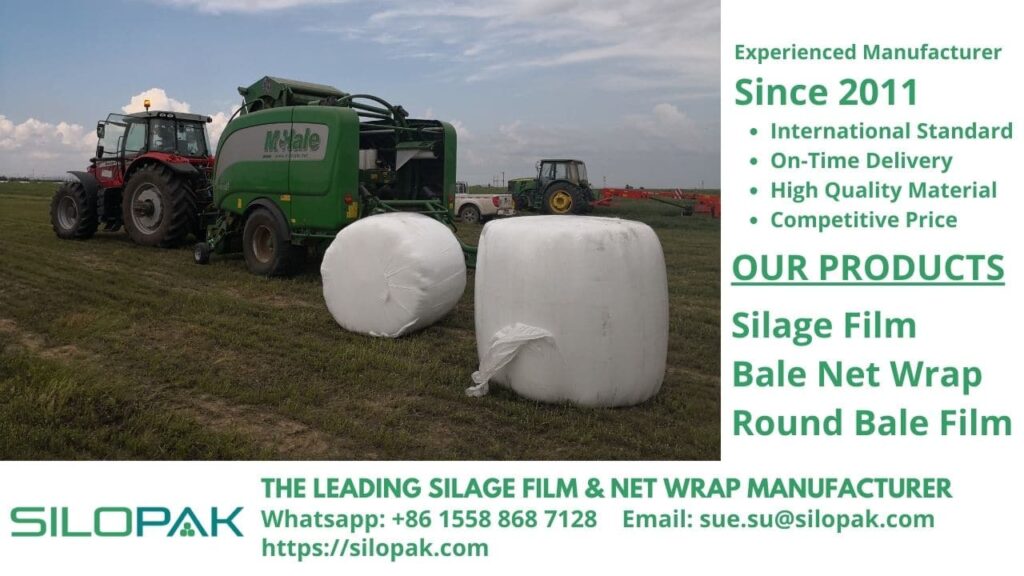
Grass silage and haylage are animal feeds that use grass as the main component, and the difference lies in the preservation method. Types of pet food can also be distinguished based on the dry matter content in percent. The dry matter content characterizes many substances that naturally have a significant water content expressed in mass percent. Hay has a dry matter content of 80% to 90%, and this is because the hay has undergone a drying process for 5 to 7 days.
The next type of fodder is haylage which has a Dry Matter content of 65% to 80%; this is because the haylage has been dried for about 3 to 5 days. The third type of food is silage which can only contain dry matter levels of 35% to 45%. Silage is usually given to dairy cows. Meanwhile, hay and haylage are often given to horses.
Determinants of Quality Grass Silage and Haylage
Silage and haylage may have different qualities. Several factors determine the quality of the animal feed, including:
- Timing of mowing the grass;
- The drying time required for the manufacture of haylage;
- Mineral content in the soil of the grass used for silage and haylage;
- Long grass;
- The condition of the grass is flowering or not;
- Weather conditions when making silage and haylage;
- Type of grass used;
Making silage can use grass that is harvested earlier than its growth process. So, you can get more nutritious and nutritious forage. When you want to make silage, then this is the right time. Mow the grass when it’s immature; use the grass when it’s in the boot stage. In making haylage, it is also necessary to consider the type of grass and herbs used.
You should avoid making haylage with just the roughness of the grass. It is feared that the nutrients that must be given to horses are not sufficient. In the open, horses can eat fifteen different types of grass. Therefore, it is also necessary to use concentrates, vitamins, minerals, supplements, or herbal mixtures to meet the needs of horse feed.
Grass Silage and Haylage have different levels of carbohydrates. Silage has higher water-soluble carbohydrates than haylage. However, the vitamin level in silage is lower than that of haylage. This is because the vitamin content can decrease over time. Those of you who want to make silage or haylage need silage film or bale net wrap. Continue reading because you are on the right web page.
We are Silopak which is well known for producing high-quality silage film and bale net wrap. The products we offer you have been tested and proven to survive even in extreme weather. The right decision you choose our products because the products we produce can maintain silage nutrition for months. Many countries have used our products. We have been exporting various types of products since 2011. The products we offer you include; round bale film, bale net wrap, and also silage film.
Comparison of Grass Silage and Haylage
Silage and haylage are both made of grass which is used to feed sheep, cows, horses, and other livestock. The main difference between silage and haylage lies in the preparation phase, storage method, ease of digestion when consumed by livestock, and the nutritional value contained in silage and haylage.
Those of you who want to make hay must pay attention to the type of grass used. Hay is the grass that is cut and then dried to a minimum dry matter content of eighty-five percent. The next stage is the hay is packed using bales and stored. Making hay takes a long time for the drying process. The thing you have to pay attention to is, the grass that has been cut must be left in the field so that the sun can dry the grass to the right level of drying. Use the rake to collect the dried grass into the windrows.
The process of making silage is more difficult and more time-consuming than making haylage. In making silage, you must use grass with a much higher humidity level than when you make hay or haylage. This silage is very helpful for farmers, especially during the dry season. Silage can be a great source of energy for your livestock.
After the silage has been successfully made, you must wait at least ten days or three weeks before giving it to livestock. This is because the silage preservation process depends on the fermentation process, and the fermentation process can occur over six weeks. The type of animal feed that is suitable, grass silage and haylage depend on the livestock you have. Adjust the type of feed given to your livestock so that the digestive system of the livestock can be maintained properly and nutritional needs are fulfilled.
